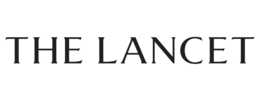Related


The rapid succession of statewide school closures due to COVID-19 affected more than 56 million elementary- and secondary-school students across the United States. Data from large ed-tech providers, such as ReadWorks, a non-profit that is one of the largest online providers of education resources, provide a unique opportunity to understand digital use and education gains and losses due to the school closures, both nationally and locally. In a series of reports, the Litmus team, led by Angela Hawken, is providing early insights into how teachers adapted their practices as they transitioned to distance learning and the uneven impact of COVID-19 on students. Drawing on anonymized data on over 256 million student assignments, these results can be used by education leaders and philanthropists to identify neighborhoods to prioritize for the distribution of digital software resources and to support an equitable allocation of remedial-instruction resources to support communities most impacted by education losses. Findings include:
Subsequent reports will identify learning losses at the school-district level, providing insights into (1) the uneven impact of COVID-19 on student learners and the locations of “education deserts,” defined as localities with large reductions in student utilization rates, and (2) the innovative strategies ed-tech providers like ReadWorks are using to mitigate these utilization losses among students in high-poverty schools.
Please fill out the information below to receive our e-newsletter(s).
*Indicates required.